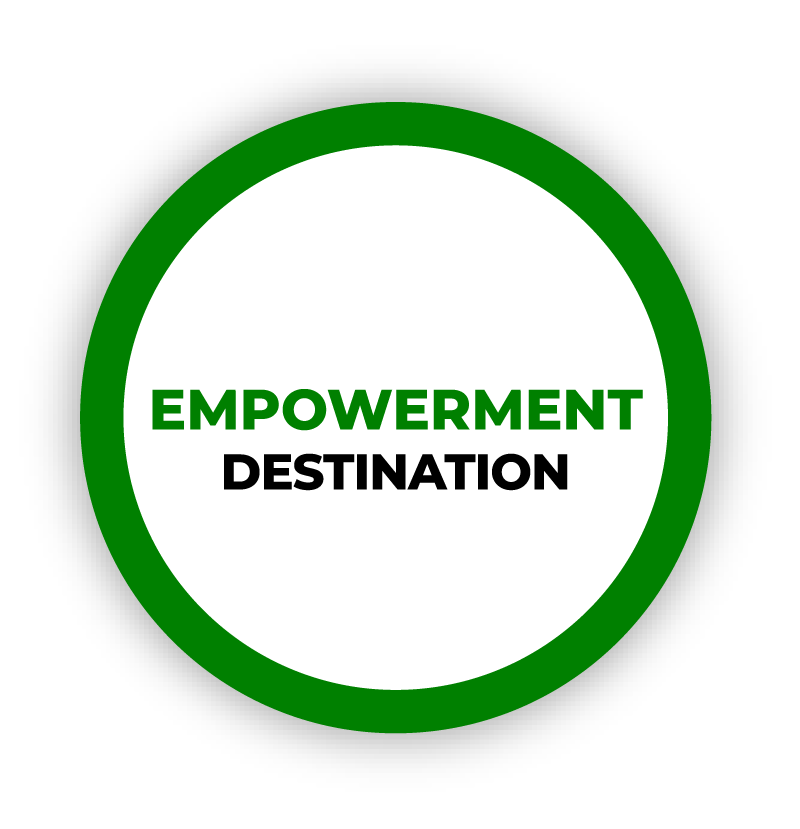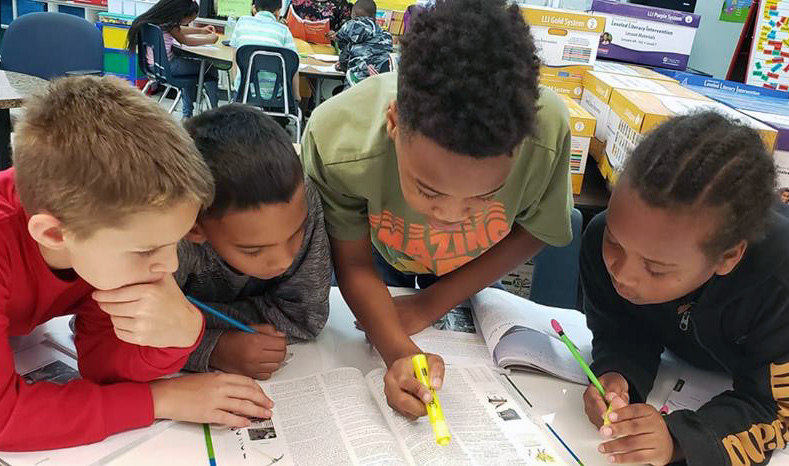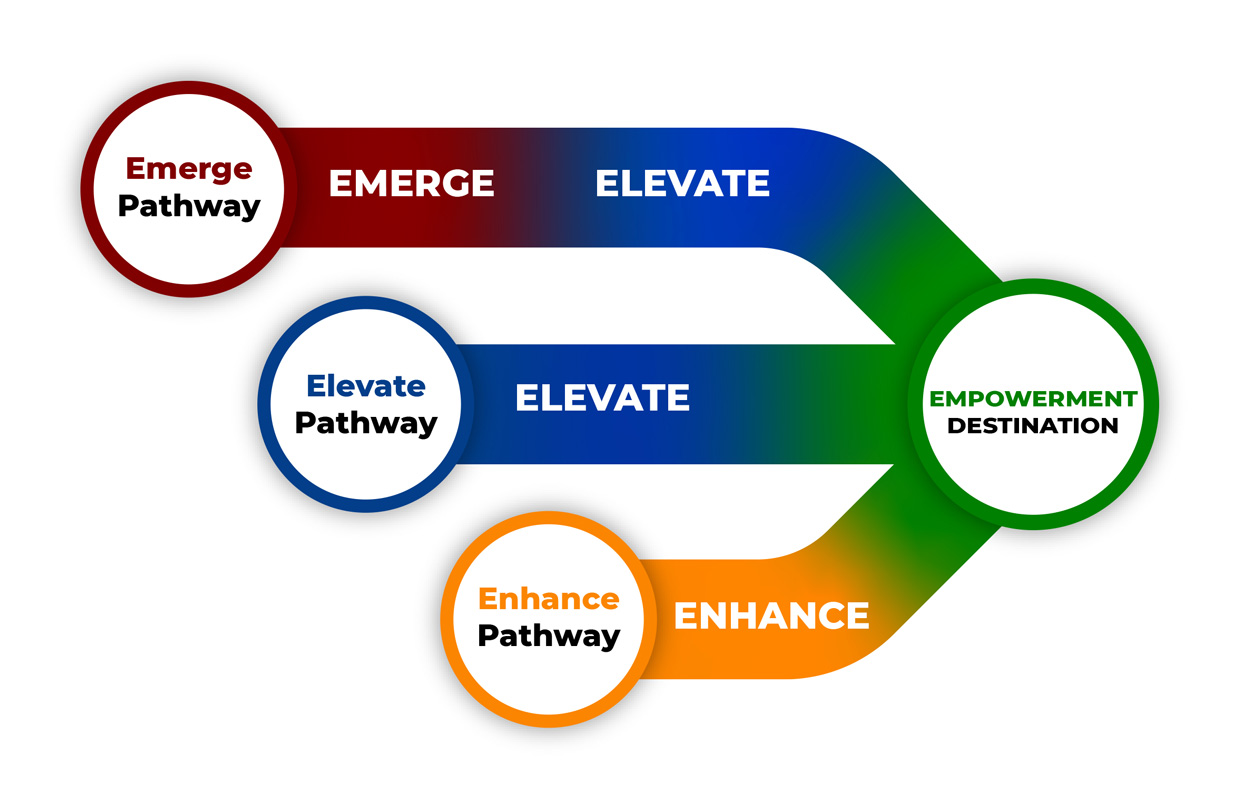In the learning environments our model of instruction creates, students develop self-efficacy and a sense of dedication to their community of scholars in their student learning team. Students develop and own the learning culture of their team where they self-regulate and peer-regulate their behaviors to the benefit of their learning community. Students develop care and empathy for other students and build lifelong bonds.
Within the student-led learning community in their team, students develop persistence, leadership, organizational skills, critical thinking and reasoning, creativity, and the robust agency necessary to succeed in college or career and in life. These are the skills necessary to break generational poverty and advance all students.
Every school, no matter its starting point, can follow the unique systems-based approach of the Pathways to School Advancement and reach the Empowerment Destination for its students, staff, and community.






